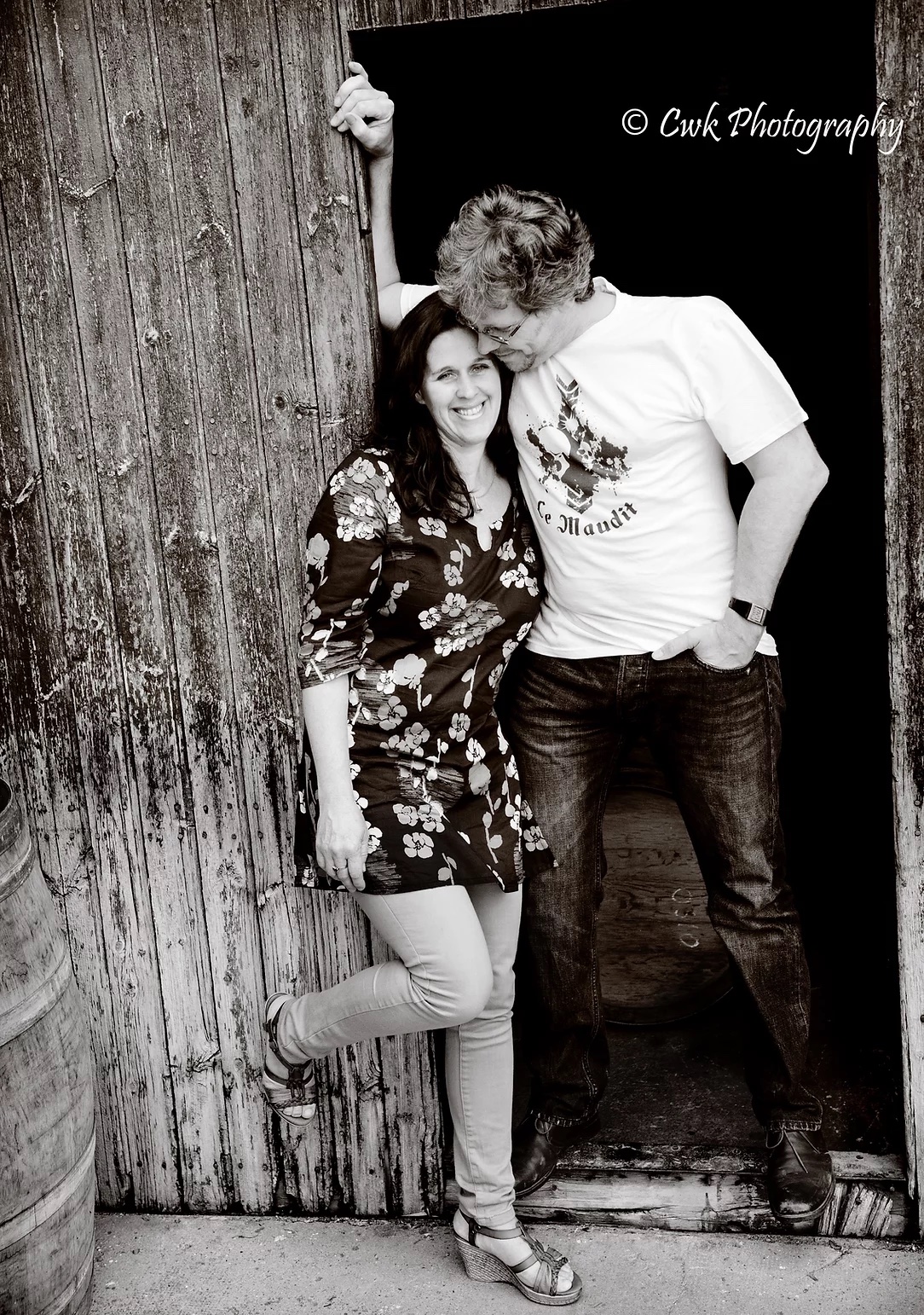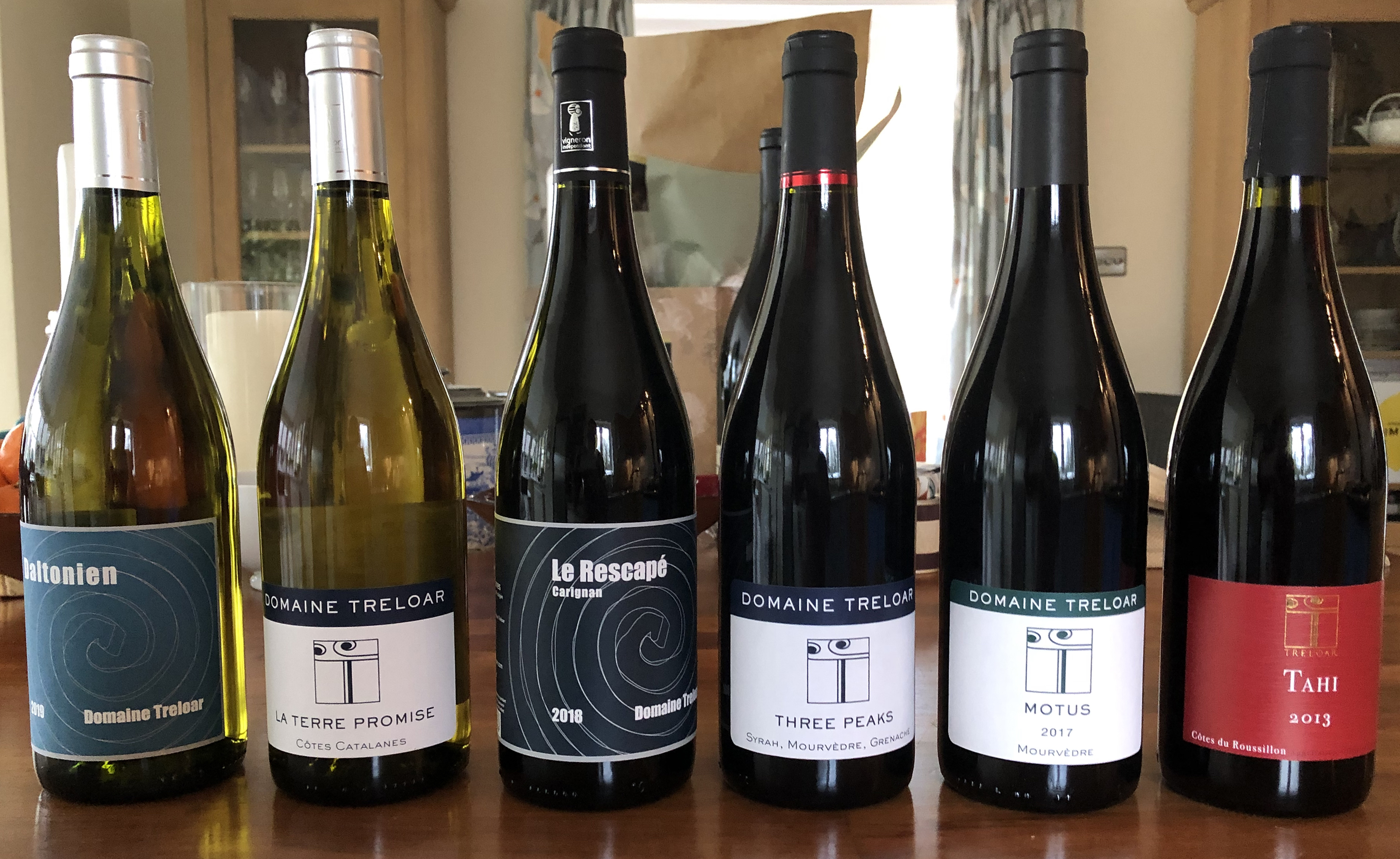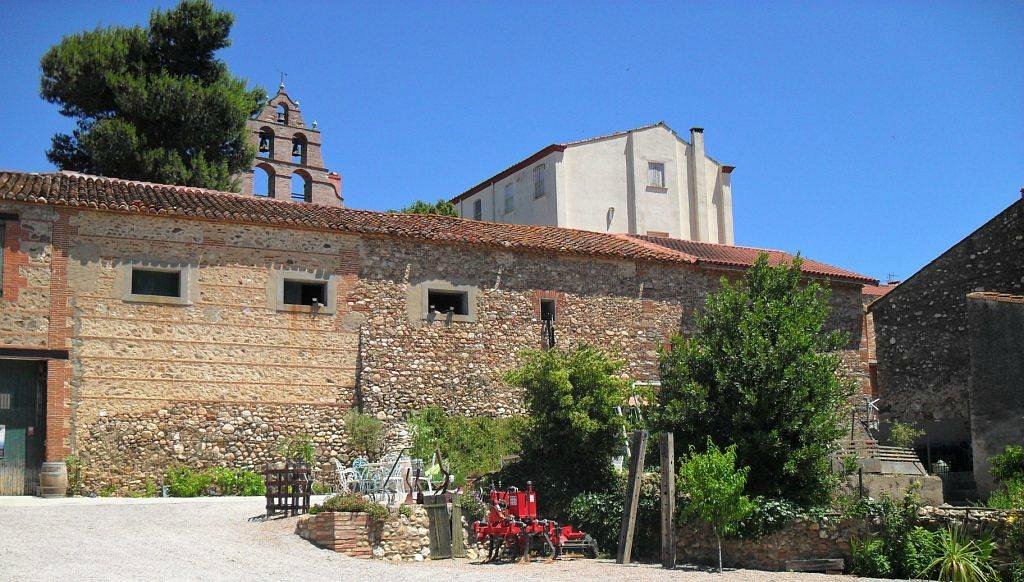‘The best in Roussillon’ says Jancis: the wines of Domaine Treloar with Jonathan Hesford
Although many of us will say a relieved farewell to Zoom tastings, listening to Jonathan Hesford speak from his cellar in Trouillas added an extra dimension to his, at times feisty but always informed and committed, celebration of independent wine-making – and how important it is for wine-makers to be granted freedom to express the terroir.
 Jonathan began by describing his, and his wife Rachel’s, journey to Domaine Treloar, nine hectares in Roussillon, south-west of Perpignan. It began with witnessing, first hand, the horror of 9/11 and continued through volunteering at a winery, coming top of the class at wine school (no luck involved there, but a lot of hard work), and then learning the business at a small family winery in New Zealand. In 2006, Jon and Rachel bought their vineyard in Roussillon, drawn in part by the region’s value for money and the presence of old vines, but – as became clear during the tasting – primarily inspired by the range of grape varieties and the relative lack of bureaucratic control of the wine industry there. In Roussillon, Jon said, they had the freedom to express themselves. Specifically, Domaine Treloar is committed to wines made in the vineyard, with as little manipulation of flavour as possible – wines that one can trace back to their creation.
Jonathan began by describing his, and his wife Rachel’s, journey to Domaine Treloar, nine hectares in Roussillon, south-west of Perpignan. It began with witnessing, first hand, the horror of 9/11 and continued through volunteering at a winery, coming top of the class at wine school (no luck involved there, but a lot of hard work), and then learning the business at a small family winery in New Zealand. In 2006, Jon and Rachel bought their vineyard in Roussillon, drawn in part by the region’s value for money and the presence of old vines, but – as became clear during the tasting – primarily inspired by the range of grape varieties and the relative lack of bureaucratic control of the wine industry there. In Roussillon, Jon said, they had the freedom to express themselves. Specifically, Domaine Treloar is committed to wines made in the vineyard, with as little manipulation of flavour as possible – wines that one can trace back to their creation.
Jon covered a vast range of topics – from the history of wine-making in the Roussillon (not to be conflated with Languedoc!) including the move away from the traditional sweet fortified wines of the region to the impact of climate change, from his planting of disease tolerant Souvignier gris (looking to the future) to his scepticism concerning biodynamics.
As was proper, however, the wines were the centre of the evening. The first was fascinating (and divided opinion). As Jon said, if tasted blind at room temperature, Daltonien 2019 IGP Cotes Catalanes Blanc, made with Muscat alexandria, could be mistaken for a red. This grape’s skins are pleasant to chew upon: Jon allows about six days of skin contact. He was keen to distinguish this aromatic white from the currently fashionable orange wines, which can have up to a year of skin contact.
Jon said, if tasted blind at room temperature, Daltonien 2019 IGP Cotes Catalanes Blanc, made with Muscat alexandria, could be mistaken for a red. This grape’s skins are pleasant to chew upon: Jon allows about six days of skin contact. He was keen to distinguish this aromatic white from the currently fashionable orange wines, which can have up to a year of skin contact.
The second wine, a mineral, leafy white named for a Bruce Springsteen song (La Terre Promise 2019) was – and again, Jon was adamant about the appropriate terminology – a combination, not a blend. He grows Grenache gris, Macabeo and Carignan blanc in a mixed vineyard and the percentages of each grape in the vintage depends on that year’s growth. All grapes are picked on the same day and – with no yeast or other additives – the skill is to enable ‘nature’ (as Jon said) to make a balanced wine.
Moving onto the reds, we were advised to serve La Rescape Carignan 2018 slightly chilled. This, for me, was the most interesting wine of the night – although I suspect I might be a lone voice. 100% Carignan, from low-yield old vines, the wine’s potential to be overly tannic is counteracted by partial carbonic maceration. We heard for the first time, but not for the last in the evening, Jon’s views on barrels – he favours American oak because it doesn’t dry out the wine, but does add spiciness, and he dismissed the notion that barrels had much to do with ‘oak’ flavours. I was struck by the surprising distance between the chocolate/coffee nose and the light, refreshing taste in the mouth.
Wines four and six were in one sense traditional Roussillon blends of Syrah, Mourvèdre and Grenache. The first, Three Peaks 2018, was predominantly Syrah, with a distinctive blackberry nose and leathery spice underneath. Many tasters enjoyed the rich, earth spiciness of this eminently drinkable wine – and at £11.00 a bottle (at the OWC price), eminently affordable as well. The second blend (Tahi 2013) had, perhaps, more elegance and structure, and – obviously – was more mature. Jon explained that he will make some twenty or so different blends of the three grapes before deciding on the appropriate balance, and then will make further corrections. In and of itself, it was interesting to be tasting a 2013 Roussillon, such is the prevalence of young wines in the market.
The fifth wine (Motus 2017) stood as another example of Jon’s independence and resistance to the sometimes heavy-handed bureaucratic rules of French wine-making. Motus is dominated by Mourvèdre – in some years he will use 100% – and is a meaty, leathery, intriguing wine. Tasters mentioned smoky bacon crisps. This is not a wine for the faint-hearted, and all the better for it!
 Overall, the tasting demonstrated conclusively the contribution that Domaine Treloar has made to the transformation of Roussillon viniculture in recent years. Yes, the region’s production is still dominated by cheap, cheerful, easy-drinking wines but Jon has shown what commitment, innovation and – occasionally – sheer bloody-mindedness and determination can do. I learned a lot, far too much to put into this short report, and would like to thank Jonathan Hesford for sharing his expertise and passion with us.
Overall, the tasting demonstrated conclusively the contribution that Domaine Treloar has made to the transformation of Roussillon viniculture in recent years. Yes, the region’s production is still dominated by cheap, cheerful, easy-drinking wines but Jon has shown what commitment, innovation and – occasionally – sheer bloody-mindedness and determination can do. I learned a lot, far too much to put into this short report, and would like to thank Jonathan Hesford for sharing his expertise and passion with us.